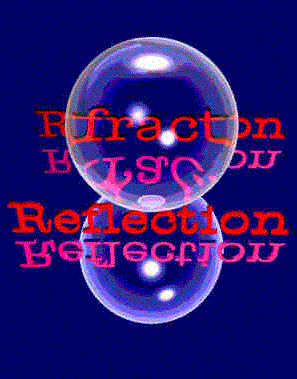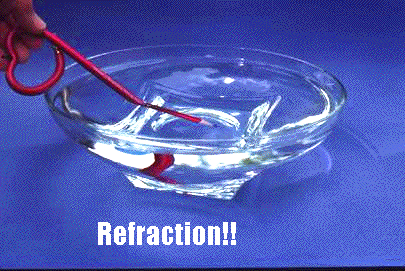I JUST CAN'T SEE IT!
 |
Machinery can make big changes
in social
behavior--- the automobile
completely changed patterns of courtship, even techniques and positions
of
sexual intercourse, in America. The development of the rail system,
and of high speed printing, over the last half of the 19th Century,
made possible the weekly magazine, and opened markets for fiction
unprecedented
in human history. Writers responded nobly to the demand for
quantity and novelty. The type of literature we call
``science
fiction'' today thus became a recognizable genre of popular fiction
more than a century ago. Completely fictional
themes and gimmicks developed during this heroic age have so deeply
penetrated
public consciousness, through use and reuse and retread and
re-re-retread during the following ages of film and television,
that it is often difficult to realize they have no counterpart
whatsoever in reality.
|
|
The gimmick of invisibility was
not
invented by H. G. Wells, but
he got there first with the best story. His inventor, Griffin,
by swilling a magic potion, made himself totally transparent.
(He would also have made himself totally blind, since the backs
of his eyes would no longer absorb light, but Wells chose to
ignore this complication.) The conceptual problem with this, as Wells
was
well aware but also chose to ignore, is that transparent objects
are not invisible. Water, air and glass are fairly transparent,
but quite visible. Another, physical problem is that transparent
objects
refract light--- change its direction slightly---
and also scatter or diffusely
reflect light--- bounce it in all directions
from their surfaces.A transparent drop of water flying through the air,
or a transparent air bubble in water, are clearly visible, by the light
they refract and reflect.
|

 |
The earth's air is transparent, but
the air between you and those distant
hills is visible because of the lovely shade of pale blue
it scatters. And the air between you and the black of outer
space is transparent, but clearly visible because of the
lovely shade of
deep blue it scatters. Clouds and fogs consist of transparent, tiny
water droplets
suspended in transparent air, but clouds and fogs are clearly visible
by
their scattering of all wavelengths of light... they look brilliant
white
in sunlight, grey in subdued light.

 |
Furthermore,
transparency and
refractive
index are intrinsic, inherent
properties of a given material. They cannot be changed, being
determined
by the internal molecular structure, and the overall spacing of the
molecules in the material. In order for substance A to be invisible
in substance B, both materials must be transparent and both must
have about the same index of refraction. No solid or liquid comes
with an index anywhere close to the index of any gas. Thus, if
you want to explore this kind of invisibility, you need a solid and
a liquid. Try ordinary Wesson Vegetable Oil and laboratory pyrex glass.
Fill a small pyrex container with Wesson oil and then submerge it
in a large jar of Wesson oil and
watch the pyrex container vanish!
Wow, golly, Mr. Science!! But so long, Mr. Invisible Man.
|
|
Decades after Wells, writers
tried other
tactics. An object
could be made invisible if you could ``bend light around it.''
The conceptual problem here is that, except in rare cases, we don't see
objects as silhouettes! We see objects mainly because their
surfaces scatter light diffusely. Since the light is scattered
in all directions, no matter how it is bent, some gets to our
eyes. A physical problem is that, in empty space or any given
material, light travels as straight as it can travel. Only
something that can change ``the shape of space itself,'' like
gravity, can bend light ``around an object.'' For example,
distant massive galaxies gravitationally bend
the light from still more
distant
galaxies directly behind them, so that the more distant galaxies
are visible as distorted arcs or in multiple images surrounding
the central galaxy, in the beautiful
``gravitational lens'' phenomenon first predicted by Einstein.
The Hubble Space Telescope has provided many wonderful examples
of such lenses. Note that in every case the central galaxy that
is bending the light is clearly visible--- indeed, it
dominates the image! As it must.
|

 |
The daffiest ``invisible''
scenario was
the
``coexistent ultraviolet
(or infrared) world''. What looks to you like the streets of a
city is in fact a dense jungle full of exotic alien animals.
It's just that the trees and animals reflect only ultraviolet
(or maybe infrared, or something) light. So we don't know they
are there! The conceptual problem should be obvious here.
The fact that we can't see something doesn't keep us from walking
into it or tripping over it, painfully! The writers confused
invisibility with intangibility. The physical problem
should also be obvious. An object that does not reflect or scatter
visible
light is clearly visible, because it appears black.
 |
With the real external world so
inhospitable to invisibility, only the human mind is left. In the
exciting world of pulp fiction,
in the 1920s and '30s, various justice figures came up with
a new way to be unseen. Like radio's Shadow, who could ``cloud
men's minds so that they cannot see him,''
perhaps by ``guesturing hypnotically'' like the comic strips' Mandrake
the Magician, these justice figures
could tumble helpless bad guys around like so many ten-pins.
And that's another story, for another time, plunging
us into yet another myth, the myth of ``mass hypnosis.''
|
In recent years the news media have
sometimes carried
almost completely nonsensical stories about "inventors" or
"professors" or "government labs" that have achieved supposed
"invisibility." What is referred to in every case that I am familiar
with is instead "adaptive camoflage." A typical idea is to dress in a
cloak
that somehow
is made to carry an image of the background; depending on how
accurately the background
is reproduced, the cloaked individual might (or might not!) be not
noticable
upon a very casual glance, although
hardly invisible. Such systems as have been "shown" to date involve
such things as video cameras with
operators, and large free-standing video projectors, and are totally
impractical for any imaginable purpose.
There is another impractical approach to invisibility, making use of the modern science of
“metamaterials.” It is possible to make a
delicate, rigid structure out of tiny bits of some
material, having the property that nothing placed inside the structure can be seen in specific
wavelengths of light. The structure's index of refraction is tuned by arrangement and size of
its pieces, so that light entering from any direction
is guided through it and exits on the opposite side, with the result that at the particular wavelength chosen,
the structure is effectively transparent, and the solid object inside it cannot be seen.
Again, because the structure is incredibly delicate and rigid,
it
does not provide invisibility for
a moving, flexible object such as a human being.
Onward to Next Science Page?
Based on material first published
by me in
a 1995 issue of the Internet magazine Baudeville.
 |
A test tube in
Wesson oil... the part of the tube below the oil is invisible since
the indices of refraction of pyrex glass and Wesson oil are close
to the same.
|
I like it, I like it, but it's not
invisibility!









